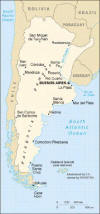Migration from Latvia, Lithuania, Belarus 1807 - 1858
to Jewish Agricultural Colonies in Southern Russia and Moldova
From the Pale of Russia to Jewish Agricultural Colonies outside of Russia 1882 -1921
This was a continual shifting of
population from place to place. Dates reflect the larger movements.
|
"A number of agricultural colonies were established
initially in Kherson Guberniya from the first decade of the 19th century.
The Yekaterinoslav colonies were established later. In 1846 the first group
of Jewish colonists set off from the rallying point in Mogilev and headed
for a region in Yekaterinoslav Guberniya. This group was subdivided
according to town of origin. So several convoys underwent the arduous
journey by river and by wagon. The 285 families were divided into six
colonies. Subsequently other colonies were established bringing the total to
seventeen by the late 1860's. At the peak in the 1880's the Yekaterinoslav
colonies housed about 20,000 Jews. The colony region was roughly north of
the Sea of Azov, and the colonies were situated in two uyezds, Alexandrovsk
and Mariupol."
-Chaim Freedman |
|||
|
To Australia 1883 |
The settlement Lvovo (Kherson) was established by Jews who immigrated from Courland around 1841... There was a famine in Courland (currently Latvia)... the entire shtetl (poor starving Jews) floated down the Dnieper River on wooden rafts...-KejilaLinks-Lvovo site | ||
|
1846 CHART Country of Origin: Latvia (Courland) 11 families Town of Origin: (not given) Selected candidates: None
|
Ludza, Latvia formerly Lutzin, Vitebsk Gubernia |
||
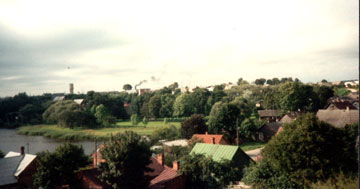 |
|||
|
Podalia
|
Mogilev and Vitebst the rallying points all cells on this chart are clickable for other views To Kherson - To Siberia - To Ekaterinoslav |
Moldova | |
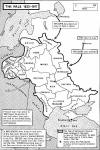 |
1846 CHART Government of Origin: Vitebsk 175 families Town of origin: Lutzin and Polotsk. Selected families: 160 Lutzin 1 Polotsk |
"And there was also a colony at Sibbald, in south eastern Alberta, named the Montefiore Colony. My grandfather homesteaded there in 1910." -Calgary, AB, Canada |
 |
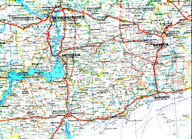 From Dnepropretovsk to Mariupol |
1846 CHART Government of Origin: Kovno 41 families Town of origin: Rassein and Salant. Selected families: 11 Rassein 30 Salant |
||
|
"There is still a school district in North
Dakota named Montefiore, according to the article. (The Minot, ND Daily News. Dec 14, 1968)" -D.Kohanski bibliography |
|||
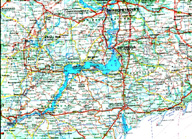 Trace the route from Kherson to Mariupol |
"These Jews were termed "vechni aradotari", renters forever,
as their original leaseholds of 40 desyatin (1 desyatin = 1.09 hectares = 10,900 square meters = 2.9 acres) could be neither bought nor sold, but only passed on to succeeding generations. The divisions of land amongst the males in succeeding generations meant that only one or two individual families could survive on the land causing other offspring to migrate to the surrounding towns and cities. Due to the limited economic opportunities, overall political oppression and periodic pogroms, starting in the 1890s many of these agricultural Ukrainian Jews migrated to Palestine, South Africa, Australia and the Americas."-Mel Comisarow |
||
Research Contact: Chaim
Freedman
This page maintained by Max Heffler
Updated Thursday March 07 2024. Copyright © 1999 [Jewish Agricultural
Colonies of the Ukraine]. All rights reserved.
